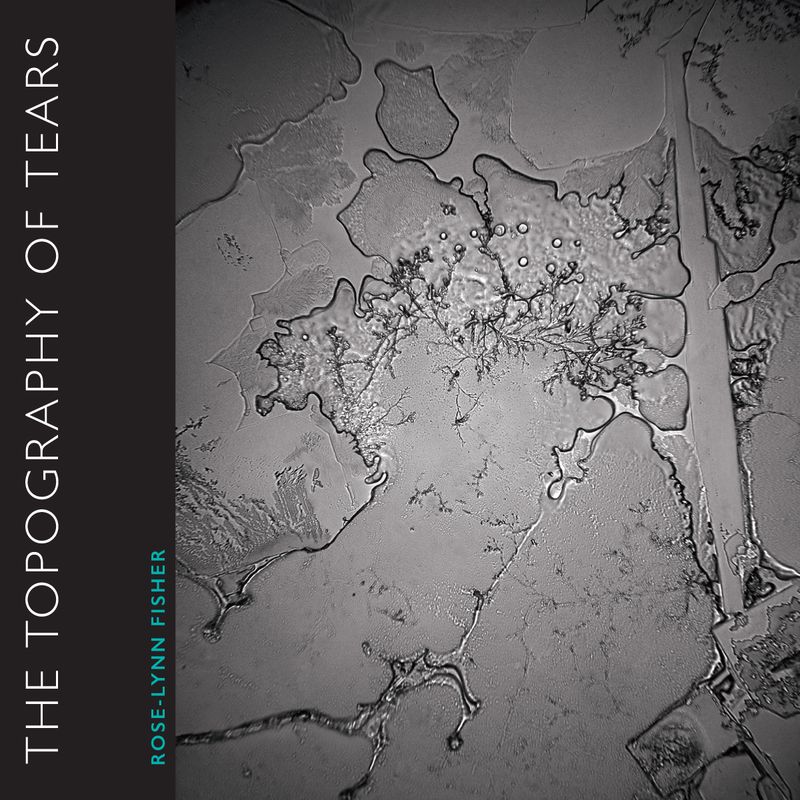When you first view Rose-Lynn Fisher’s photographs, you might think you’re looking down at the world from an airplane, at dunes, skyscrapers or shorelines. In fact, you’re looking at her tears. . . . [There’s] poetry in the idea that our emotional terrain bears visual resemblance to the physical world; that our tears can look like the vistas we see out an airplane window. Fisher’s images are the only remaining trace of these places, which exist during a moment of intense feeling—and then vanish.
The Topography of Tears
Does a tear shed while chopping onions look different from a tear of happiness? In this powerful collection of images, Rose-Lynn Fisher, an award-winning photographer trains her optical microscope and camera on her own tears and those of men, women, and children, released in moments of grief, pain, gratitude, and joy, and captured upon glass slides.
These duotone photographs reveal the beauty of recurring patterns in nature and present evocative, crystalline imagery for contemplation. Underscored by poetic captions, they translate the mysterious act of crying into an atlas mapping the structure and magnificence of our interior lives.
Foreword contributor William H. Frey II, PhD is the Founder and Senior Research Director of HealthPartners Neurosciences, faculty member in the Neuroscience Program at the University of Minnesota, and coauthor of Crying: The Mystery of Tears.
Foreword contributor Ann Lauterbach is a poet, essayist, and Ruth and David Schwab professor of languages and literature at Bard College. Her most recent poetry collections include If in Time: Selected Poems 1975-2000, Or to Begin Again, finalist for the National Book Award, and Under the Sign.
Amateur Photographer magazine “Best Book of the Year” selection
Elizabeth Avedon’s “Best Photography Book of the Year” selection

Paperback
- ISBN
- 9781942658283
Ebook
- ISBN
- 9781942658290
Rose-Lynn Fisher shares the story behind (and images from) The Topography of Tears with NPR, Southwest: The Magazine, LA Weekly, Lenscratch, Feature Shoot, and Angelus magazine. Enjoy more from the book at the Marginalian and Los Angeles Review of Books.
View slideshows from Rose-Lynn Fisher’s The Topography of Tears project in the New Yorker, TIME for Kids, and LensCulture, and photo essays from the series on WNYC’s Studio 360 and in Smithsonian magazine.
Read more about The Topography of Tears project in Wired, Broadly, Gizmodo, and Medical Daily.
Find out how Rose-Lynn Fisher’s The Topography of Tears inspired the cinematography in First They Killed My Father in British Cinematographer and read about Darquer’s “Tears and Lace” haute couture line, which was also inspired by The Topography of Tears project, at Lingerie Francaise.
Rose-Lynn Fisher is an artist and author of the International Photography Award-winning studies Bee and The Topography of Tears. Her photographs are exhibited in galleries, festivals, and museums across the world, including the Palais de Tokyo in Paris, Museum of Science Boston, Johnson Museum of Art at Cornell University, Nova Scotia Museum of Natural History, and Craig Krull Gallery, Santa Monica. They have also been featured by the Dr. Oz Show, NPR, Smithsonian, Harper’s, New Yorker, Time, Wired, Reader’s Digest, Discover, Brain Pickings, and elsewhere. She received her BFA from Otis Art Institute and lives in Los Angeles.
visit author page »Praise for The Topography of Tears
There are elements of Fisher’s images [in The Topography of Tears] that can’t be explained by science, and the great poet Ann Lauterbach also wrote an essay for the book, drawing on work from William Blake and Janis Joplin to define the many meanings of tears. It’s only in the afterword that Fisher reveals the personal inspiration behind the work. . . . In those final pages of text, we’re surprised to remember the ordinariness of the many epic ‘landscapes’ that came before. Suddenly, they don’t seem so alien anymore.
Addresses a studious urge to understand more closely the liquid expression of human emotion.
— GUP Magazine
Reveals the existence of a multitude of territories inside of us.
— Palais de Tokyo curator Rebecca Lamarche-Vadel
Stunning photographs transport us to a previously unseen world. . . . [They] also invoke within us a new set of emotions as individual as each of its viewers. What a pleasure.
— William H. Frey II, PhD, founder and senior research director of HealthPartners Neurosciences and coauthor of Crying: The Mystery of Tears (from the foreword)

